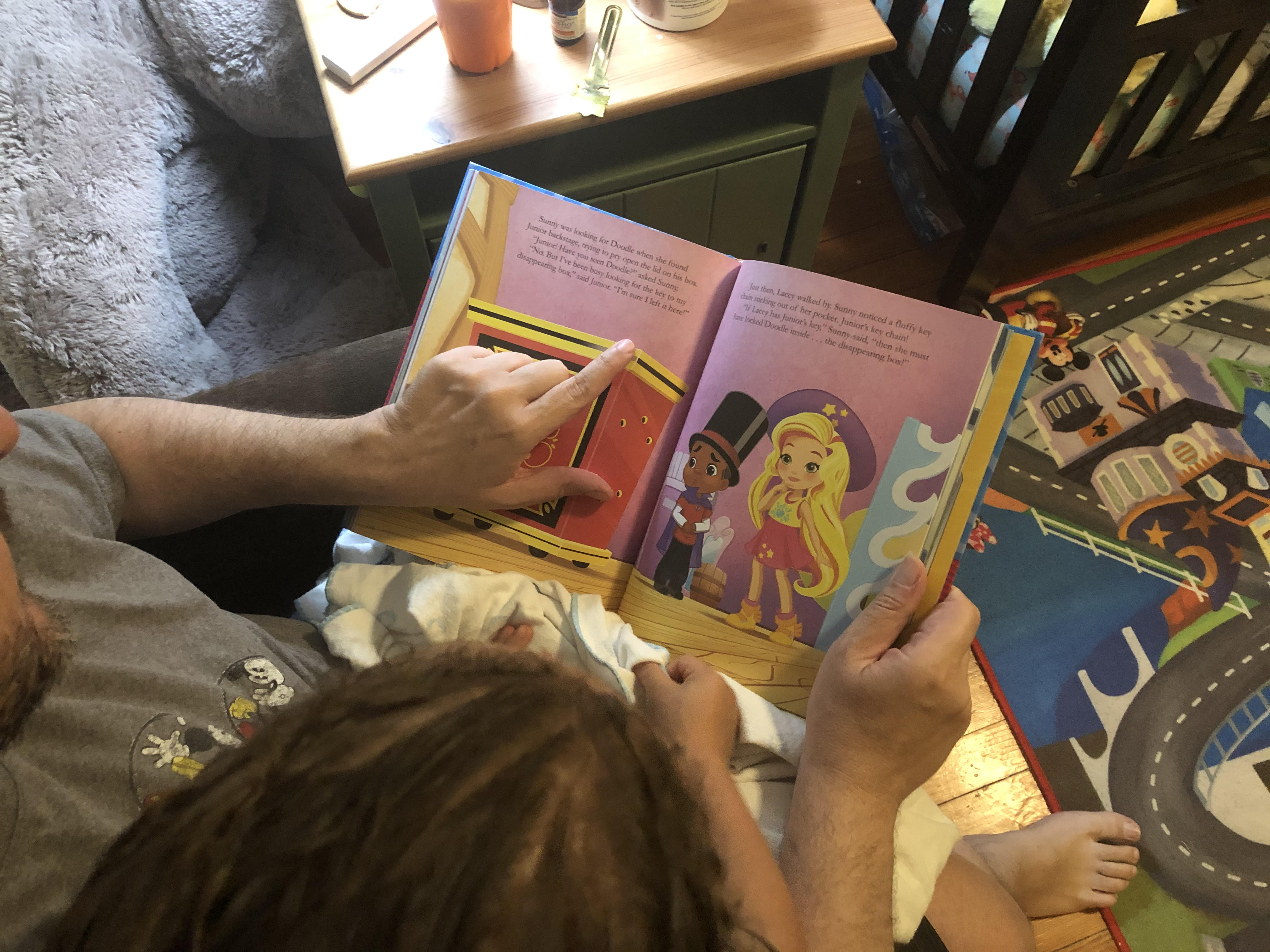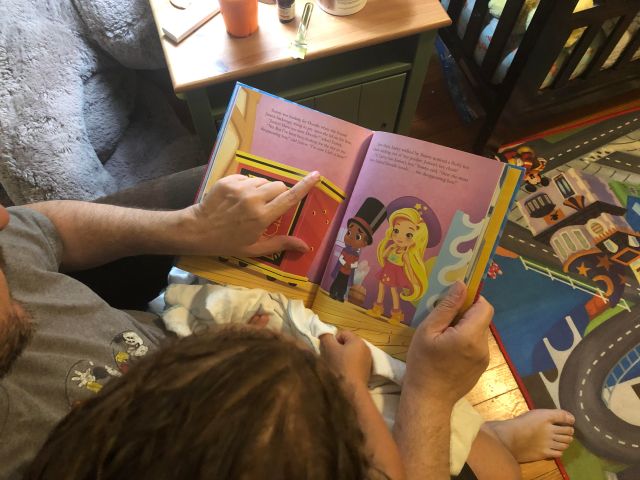
Once you hear the full-throated laugh of your child, see them startle in surprise, or hear them squeal “again, again” when you finish a book passage, you’ll be hooked; you’ll know you’ve done it right, and you’ll have created a memory, a feeling, that will last a lifetime.
I know you’re tired. You’ve been working all day. You’ve come home (or have been working in the home) have started (or continued with) the chores, made food, dealt with the bills, the PTA, the in-laws, the friends, the frenemies, politics (lower-case p), Politics (uppercase P), married life, single life, traffic, the boss, the employees, and every other thing that an adult has to deal with on a day-to-day basis. If you have more than one child, I’d set the multiplication factor exponentially at 12 per additional child. Life is hard. Dead stop. Yes, you can say it, think it, feel it. Life is hard. And now, this little human (they are little humans even when they behave like little monsters) wants to hear a bedtime story. I’m here to tell you: Yes. Do it. And, you should encourage them to want to hear a story.
But, how? How do you effectively read with a child? Well, for starters the days of reading to, are over.
1. Be Present. If you think that I’m going to start with some New Age fangled stuff, you’re right. (Although at this point isn’t it really Old Age?) If you are rushing through the reading, looking at your watch, dreading every second of it, and thinking of what you’re going to be doing next, you should not be reading with your child. Stop. Don’t do it. Grab the iPad, the laptop, whatever and go to YouTube and find a story of somebody entertaining reading a book and let your child view that. You can go have a drink (your beverage of choice) and relax. You are in no condition to be reading a storybook. You are not invested. It is not that you are necessarily a bad caregiver. I’m not judging. I don’t know you. You are just not in the right frame of mind to complete the task at hand.
To read a storybook and actually connect with the book and the child, you need to be fully invested in the child and the story. There is no fooling a child. The second your mind starts to wander, the child will wander with you. Reading a storybook is work. And, it should be. The benefits that you read about in those articles I linked? You didn’t think those fell out of the sky, did you? Reading a storybook takes concentration, anticipation, joy, rhythm, and enthusiasm. You cannot do it if your mind is wandering all over the place. You have to fully commit.
If you want to establish a routine of regular reading with your child, you have to do just that: establish a regular routine. It has to be when you both set aside a place and time to be in your own little world–undisturbed from the world around you. You have to start by making the time available in your schedule, to be present. This is not something you can half-ass.
2. Do the Voices. If you are reading along and wondering if you need to do the voices of the various characters, the answer is a resounding, yes! And, by the way, the narrator has a voice. Kids love when each character has a different voice. It keeps up their attention, it sparks their interest, it engages their minds. I want you to stop for a moment and think of the story of The Three Little Pigs. Those of you that know the story, know the line: “Then I’ll huff, and I’ll puff, and I’ll bloooooow, your house down!” OK, how many of you just heard that in the voice of the Big Bad Wolf? What about “Not by the hair of my chinny chin chin”? Did you hear that in the voice of a tiny, squealing little pig? Chances are you did.
Now I’m not going to kid you. Doing voices is hard work. And, I know that some of you are put off by this. But I have news for you: your child doesn’t care whether or not you are any good at doing the voices. They only care about your enthusiasm and that you try. So, here are some tricks of the trade. If voices are not your strong suit, do dynamic reading. Vary your rhythm. Speed things up. Slow them down. Take, dramatic, pauses. Stop. Continue. Talk Louder! Talk softer. The punctuation on the page is your friend. Use it as a guidepost. [By the way, even if your voices are good, you should be reading dynamically anyway.]
3. Your Reading Must Be Interactive. Anticipatory/interactive reading is key to not only building a life-long love of reading but to building the critical thinking and reasoning skills we all need to survive in the world.
As you read the story, ensure that your child explores the pictures on the page. Ask questions like: “What do we see in these pictures?” “What do you think this means?” “How is this character feeling?” “Is she happy? Sad?” “Have we seen this before?” “Is there something missing?” You can even ask your child to predict what might happen depending on what the pictures are showing. Every now and then, take pauses in the story and ask your child to review for you what has happened so far. This, is your check for understanding. With younger children, you may have to do a bit of leading. Once you’ve done a recap, ask your child to predict what’s going to happen next and why they think that’s going to happen. As your child gets older, the predictions will get better.
The key to interactive reading is to remember that you are not just a reader, you are actively acting as a parent, teacher, caregiver, instructor, and mentor. You are developing vocabulary, bridging synapses, strengthening concepts–in short, you are building a human building. All, under the guise of reading a storybook.











